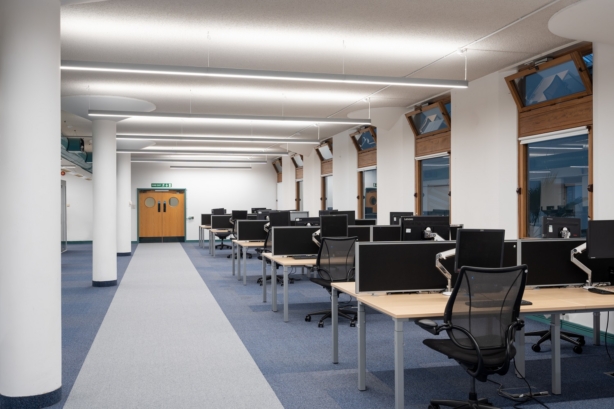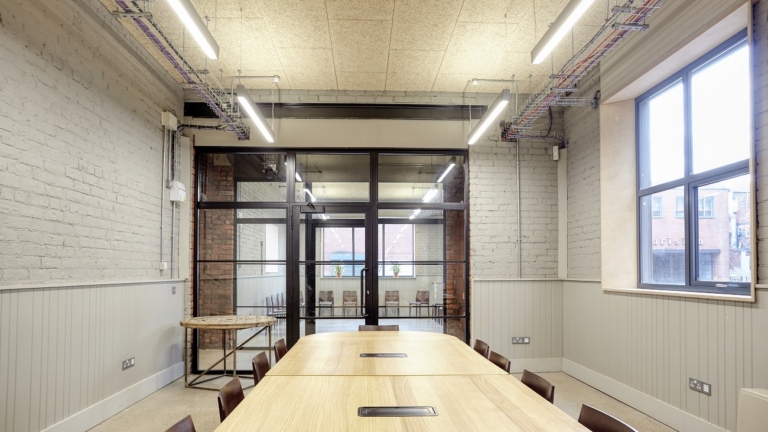
We are a leading manufacturer of quality internal and external lighting products for commercial, industrial and retail applications.
View all productsAt Ansell Lighting we design and manufacture an extensive range of luminaires for a diverse number of sectors and applications. Whatever the shape, purpose or style of your space, we have a lighting solution.
View all sectors & applicationsWe are a leading manufacturer of quality internal and external lighting products for commercial, industrial and retail applications.
Welcome to Ansell lightingWe are here to answer any questions you may have, help you find a stockist or speak to a local member of our team.
OCTO delivers the complete smart lighting package to transform the efficiency and ambience of commercial and residential spaces.
Find information regarding our product warranty, product data downloads and FAQs regarding lighting and technical terms. Here you will find support with training CPDs as well as useful lighting design and LED strip calculators.
Smart lighting in the workplace post COVID

The average square footage of the UK’s new build homes has decreased by almost 20 per cent in the last decade. Similarly, with office occupancy rates staying stubbornly low, there has also been a significant shrinkage in the national office footprint. James Foster, OCTO National Sales Manager at Ansell Lighting takes a look at how specification of the right lighting installation can help solve issues associated with the changing use of our private and commercial spaces.
“The way we live and work has undoubtedly changed. A lack of development land has meant that the new homes we build are getting smaller, whilst changes to our working patterns have meant that for many businesses and organisations, large office spaces that house the entire workforce are no longer required.
“As with all forms of evolution, these changes call for real adaptation and in the lighting world that means specifying solutions that are responsive and adjustable; that work not only with varied routines but that also address other challenges we face such as energy use and carbon emissions.
“Smart occupancy systems, as they have been coined, use intelligent technology to effectively manage the relationship between humans and their usage of the built environment.
“Ideal for spaces where lighting requirements change regularly, such as workplaces that are being used sporadically, or in homes where users are frequently moving rooms, they provide light or other building services only when they are needed and are having a huge impact on the amount of energy used.
“In an environment of soaring energy prices and rapidly rising inflation, smart occupancy systems can really help homeowners, businesses and other commercial organisations to make significant energy savings. Lighting accounts for almost 40% of all energy used in commercial buildings in the UK, and around 10% of that in homes. With the traditional 9 to 5 office working practices out of the window, there is real potential that businesses will use energy to power lighting unnecessarily, whilst individuals could see a significant rise in their energy bills due to working from home.
“Smart lighting systems have been around for a number of years now and their use is becoming more mainstream, but it is technology such as this that will help individuals and property owners to optimise their energy use.
“Smart lighting uses automation to ensure that lighting is only used where and when it is needed. Suitable for both internal and external lighting circuits, it can be used to operate any type of domestic or commercial space; from kitchens and bathrooms to offices, meeting rooms, warehouses, and even external areas such as building façades, car parks or walkways.
“It allows you to pre-set the times that lighting is in operation, set up different ‘scenes’ or combinations of luminaires that are in operation, control colour temperature so that it becomes brighter as the evening sets in and can be easily controlled via an app, voice or using an ecosystem such as Hey Google or Amazon Alexa.
“Aside from smart technology itself, fittings with motion or presence/absence detection sensors also play a huge role in smart occupancy systems. Ideal for all applications, they too ensure that lights are only in operation when the space is use. Smart technology-enabled daylight harvesting systems are another great solution that can also be used to optimize energy savings, allowing buildings to take full advantage of any natural lighting available, reducing and increasing the artificial lighting as and when it is needed.
“Hugely beneficial, this level of smart occupancy automation means that home owners and property managers can ensure that lighting is only ever in use when needed.
“For commercial properties the technology is also hugely measurable which in itself presents further benefits. Recent advances in equipment mean that many commercial smart lighting solutions now come with dashboard controls which can accurately measure lighting energy usage in real time, giving a clear view of lighting-based energy consumption data across one office or an entire portfolio. This allows businesses to accurately evaluate usage and identify opportunities to reduce unnecessary use, whilst also highlighting spaces that are unused and either no longer needed or do not require regular services such as cleaning or heating – reducing additional operational costs.”
You Might Also Be Interested In...

